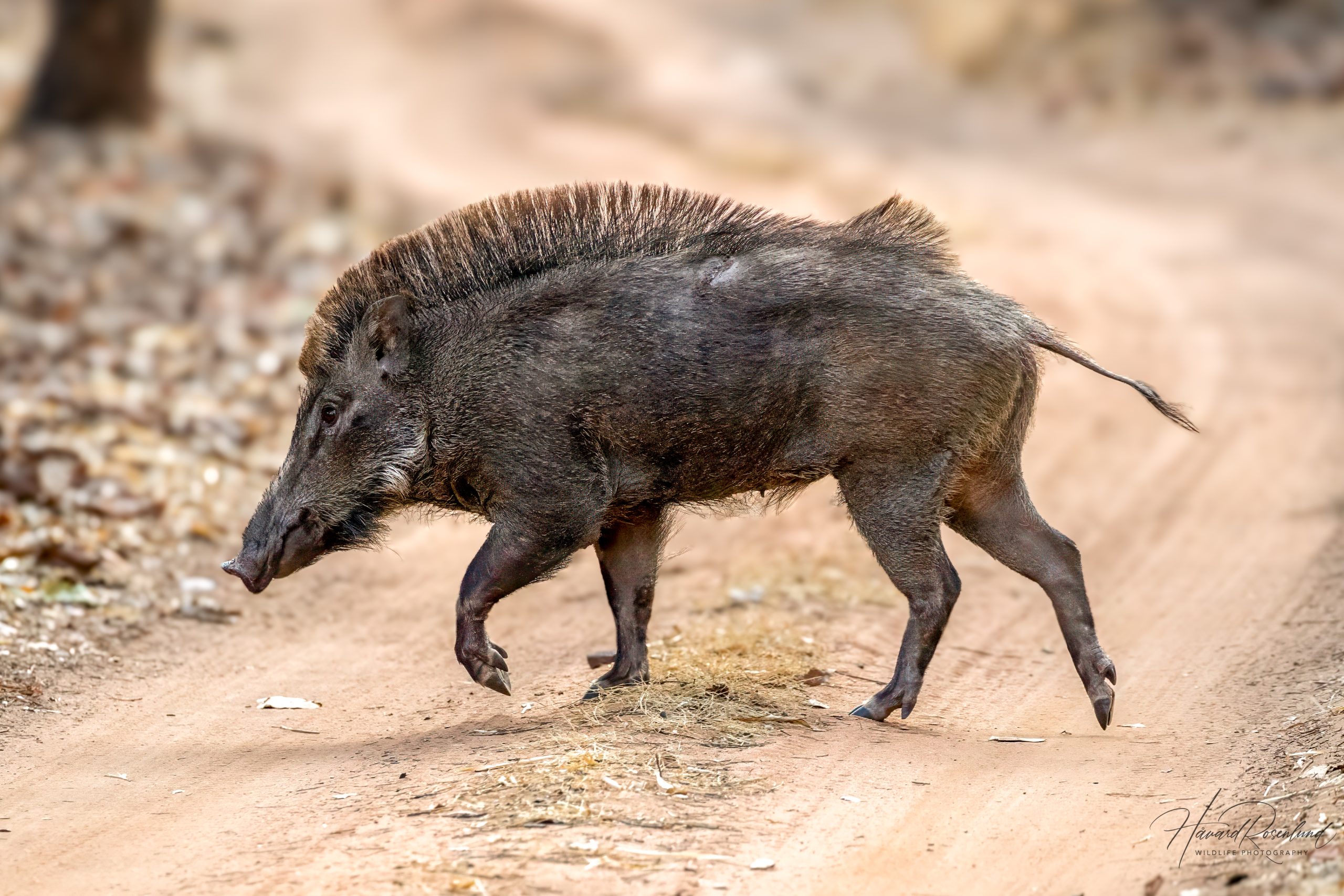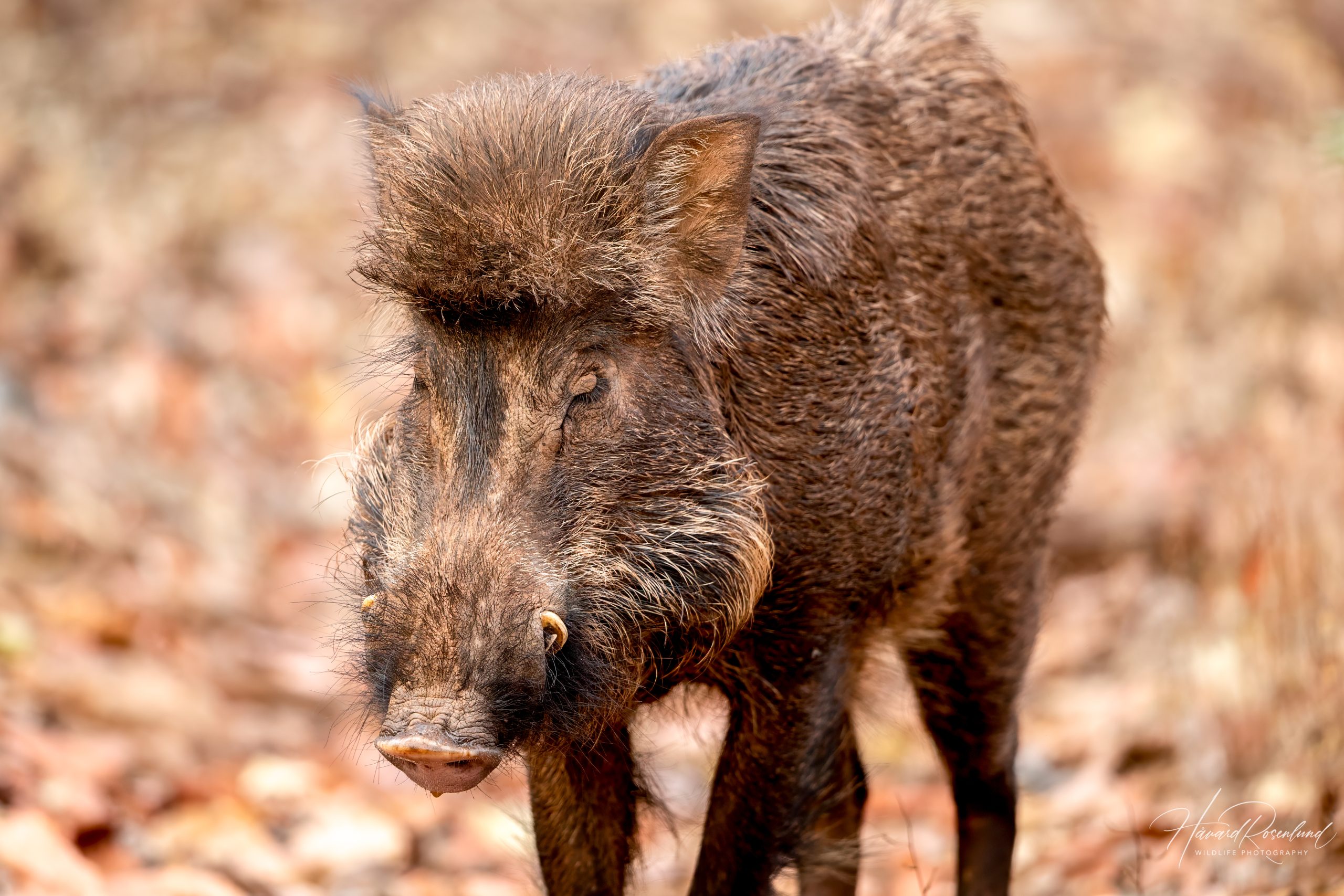Description
The wild boar (Sus scrofa) is a robust and adaptable ungulate found throughout Europe, Asia, and parts of North Africa. It has also been introduced to North America, South America, and Oceania. Wild boars exhibit considerable variation in size, with adult males typically weighing between 50 to 200 kg (110 to 440 lbs) and measuring 120 to 180 cm (47 to 71 inches) in length. Females are generally smaller, weighing 30 to 150 kg (66 to 330 lbs).
Wild boars are characterized by their bristly hair, which ranges in color from dark gray to brown or black. Their coat can change seasonally, becoming denser and darker in winter. They have a stocky build with a prominent snout used for rooting. Males often have larger tusks, which they use for defense and foraging. There are several subspecies of wild boar, and they differ in size and coloration depending on their geographic range. For instance, the European wild boar (S. s. scrofa) is typically larger and darker, while the Indian boar (S. s. cristatus) has a lighter build and a more pronounced mane.
Diet & habitat
The habitats of wild boars are diverse, including forests, grasslands, swamps, and agricultural lands. They prefer dense vegetation that offers cover, such as mixed deciduous and coniferous forests, but they are highly adaptable and can also thrive in human-altered landscapes. These are omnivorous animals, with a diet that includes roots, tubers, nuts, seeds, fruits, small vertebrates, and carrion. Their foraging behavior is primarily nocturnal, using their sensitive snouts to dig and root through soil and leaf litter in search of food. Wild boars are known to consume crops and can cause significant agricultural damage.
Behavior
Wild boars are social animals, typically forming groups known as sounders, consisting of females and their offspring. Males are generally solitary, especially outside the breeding season. These sounders are matriarchal, with a leading female (often the oldest) guiding the group.
Their behavior includes wallowing in mud to regulate body temperature and remove parasites. Wild boars communicate through a variety of vocalizations, including grunts, squeals, and growls, as well as through scent marking. They are known for their intelligence and can learn to avoid traps and hunting efforts, making them a challenging species to manage. Despite their often aggressive reputation, wild boars generally avoid humans and only become dangerous when cornered or threatened.
Reproduction
Wild boars breed once a year, with the breeding season varying by region. In temperate areas, it typically occurs in the fall, while in tropical regions, it can occur year-round. Males compete for access to females through displays of strength and combat. The gestation period is about 115 days, with sows giving birth to litters of 4 to 6 piglets, although litters of up to 10 are not uncommon. Piglets are born with characteristic striped coats, which provide camouflage. Females construct nests from vegetation to protect their young, who are weaned at around 3 to 4 months but may stay with the mother for up to a year. Wild boars can live up to 10 years in the wild, though few reach this age due to predation and hunting pressures.
Introduced populations
Wild boars have been introduced to various parts of the world, including North America, South America, Australia, and New Zealand, mainly for hunting purposes. These introductions have often resulted in ecological disruptions, as wild boars can become invasive. They impact native species through competition, predation, and habitat destruction, and they can cause substantial agricultural damage. In regions like the southern United States and Australia, wild boars are considered a major pest, leading to efforts to control their populations through hunting, trapping, and other management practices.
Status
The wild boar is classified as least concern by the IUCN due to its wide distribution and large population. However, specific populations may be threatened by habitat loss, hunting, and hybridization with feral domestic pigs (Sus scrofa domesticus). Conservation efforts focus on managing populations in areas where they are native and controlling them where they are invasive.









